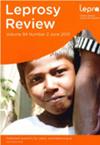尼日利亚北部麻风病和相关污名的社区观点:一项定性研究
IF 0.8
4区 医学
Q4 DERMATOLOGY
引用次数: 0
摘要
摘要目的本研究探讨了尼日利亚北部卡诺州社区对麻风病的看法以及污名化的程度、根源和驱动因素。方法该研究采用了横断面设计和定性方法。对未受麻风病影响的社区成员进行了半结构化的深入访谈。参与者采用分层目的性抽样进行选择。专题分析是根据“框架方法”进行的。结果本研究共纳入21名社区成员。我们发现,大多数参与者对麻风病患者的看法是负面的,他们被认为是肮脏的、无法治愈的和低劣的。参与者表示,他们避免与麻风病患者接触、社交和共享餐食。此外,据说麻风病对受影响者及其家庭成员的就业机会和婚姻前景产生了负面影响。受麻风病影响的妇女的婚姻前景被认为更糟。我们确定了污名化的四个主要驱动因素:(1)当地对麻风病的信仰和误解(例如受影响的信仰)。我们的研究结果强调了社区教育和行为改变的重要性,这是改变对受影响者的看法和行为的关键。本文章由计算机程序翻译,如有差异,请以英文原文为准。
Community perspectives on leprosy and related stigma in northern Nigeria: a qualitative study
SummaryAim This study explored community perceptions about leprosy and the extent, root causes, and drivers of stigma in Kano State, northern Nigeria. Methodology The study used a cross-sectional design with a qualitative approach. Semi-structured in-depth interviews were conducted with community members unaffected by leprosy. Participants were selected using stratified purposive sampling. Thematic analysis was performed based on the “Framework Approach”. Results A total of 21 community members were included in this study. We found that the majority of the participants perceived persons affected by leprosy negatively, they were considered dirty, incurable, and inferior. Participants indicated that they avoid touching, social interactions, and sharing meals with persons affected by leprosy. In addition, leprosy was said to negatively impact employment opportunities and the marriage prospects of persons affected and their family members. Marriage prospects were considered worse for women affected by leprosy. We identified four main drivers of stigmatization: (1) local beliefs and misconceptions about leprosy (e.g. the belief affected. Our findings underscore the importance of community education and behavior change as key to transforming perceptions and behavior towards persons affected.
求助全文
通过发布文献求助,成功后即可免费获取论文全文。
去求助
来源期刊

Leprosy review
医学-病理学
CiteScore
1.10
自引率
16.70%
发文量
35
审稿时长
>12 weeks
期刊介绍:
Leprosy Review is an Open Access peer reviewed journal including original papers on all aspects of leprosy. Topics published include research into the medical, physical and social aspects of leprosy and information relevant to leprosy control. We publish original research, short reports, case studies and reviews. The vision of the journal is to improve the management and control of leprosy and its consequences, by publishing relevant research and sharing experiences and best practices.
 求助内容:
求助内容: 应助结果提醒方式:
应助结果提醒方式:


